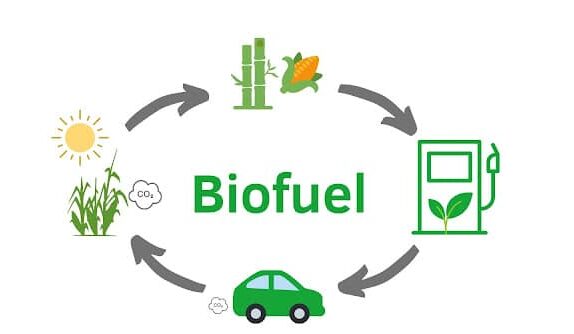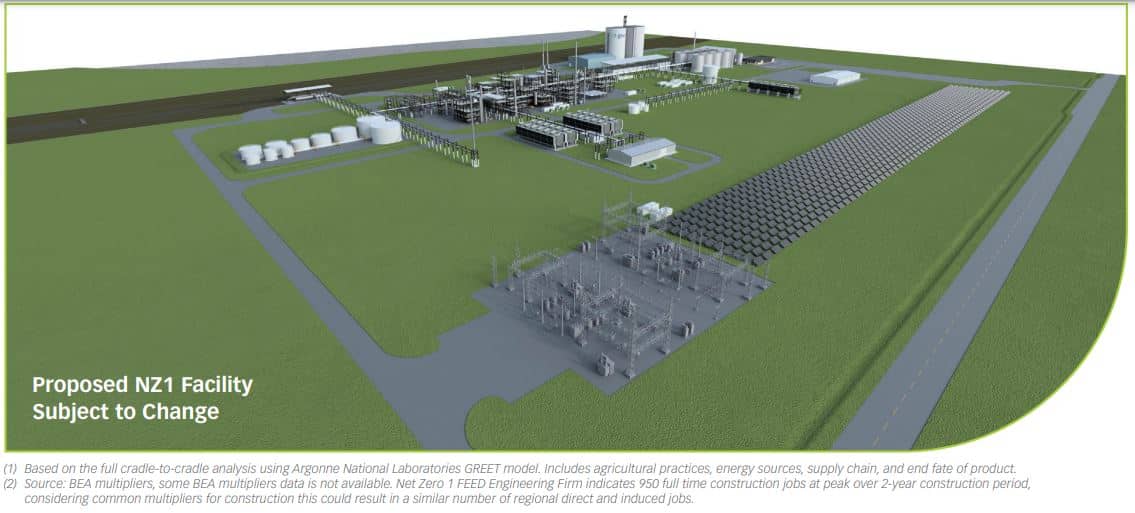Since the Inflation Reduction Act (IRA) was passed by the U.S. Congress last year, the country has started to look at agriculture, and its carbon sequestration, as a key source of renewable energy to produce biofuel and generate carbon credits.
Several federal and state programs exist that incentivize farmers to turn their agri wastes into biofuel to power vehicles. But it seems they weren’t enough until the government decided to revive and enact the biggest climate change bill.
To promote clean and renewable sources of energy, the Act incentivizes projects in the sector with $140 billion tax credits. The financial support came in the form of loans, grants, and other incentives to move away from fossil fuels to lower the nation’s CO2 footprint.
Turning Farm Products and Wastes to Low-Carbon Energy
Renewable energy project developers are seeing great opportunities in converting their agri crops and wastes to cleaner forms of energy like biofuel.
For one, biofuel producers can be eligible to earn the corresponding renewable energy certificates or carbon credits from it. The amount of credits depends on how much carbon their project reduces or removes.
And more recently, producers of renewable energy in the U.S. are taking advantage of the IRA incentives, either by installing new technology or planning to construct new plants.
For instance, the Department of Energy had awarded a biofuel company running an ethanol refinery with tens of millions of dollars as grant. The funding is for building a plant that can produce over 1 million gallons of biofuel yearly from wood chips.
Moreover, a carbon capture firm LanzaJet works with another producer to make aviation fuel from a biodiesel plant. The biofuel will be for planes flying from the two largest airports in Chicago.
The plan of the American government to convert agricultural products into energy is not only for cutting emissions but also to boost economic outcomes. Plus, the carbon sequestration capabilities of farms will further drive more agricultural production.
The Net-Zero Biofuel Producer
One of the biggest projects that the IRA supports is Gevo, a biofuel producer in Colorado operating a 245 acres of field housing corn crops and a refinery plant called Net-Zero 1. The project, which gets its renewable energy from a wind farm, will emit 80% less CO2 than a conventional plant producing ethanol.
- The facility will produce 65 million gallons of aviation fuel each year from processing 35 million corn bushels.
The processes to produce the biofuel, as well as the carbon captured from the air will offset the emissions from the jets. As such, Gevo’s CEO believes it will be the world’s cleanest ethanol plant releasing the lowest CO2 emissions.
The company’s goals will be achieved only with the financial support from the government through the IRA.
Its plant will be eligible for a clean fuel tax credit each gallon ($1.75) once it starts operating in 2025. And an additional $85 for each ton of CO2 it captures and stores underground, plus the carbon credits its biofuel plant is eligible to generate.
The company is also expecting a whopping loan guarantee worth over $600 million covering 70% of the plant’s construction expenses.
All that amid the criticisms of environmental groups worrying about the pollution from agricultural wastes. They claim that more acres of corn production and more manure from farm animals can produce more nutrient pollution. Nitrogen and phosphorus, in particular, pose the biggest problems affecting the water quality in the country.
Yet, project developers are motivated to build more plants to convert organic wastes to biofuel.
Biodigesters and the Incentives to Capture Carbon
Currently, there are more than two thousand biodigesters operating in the U.S. But with the passage of the IRA, that number could go up 5 times to about 15 thousand more.
These biodigesters, mostly in big cattle and poultry farms, are producing methane to use in producing power and transportation fuel. A company in Missouri, for instance, is constructing 6 large biodigesters with funding support from the Department of Agriculture to make methane from animal wastes.
Here’s a sample of how a biodigester works to produce methane (biogas), according to a paper by Kalaiselvan et al.

A cattle farmer beneficiary said that this is a new means to marry conservation farming and new energy production that “farmers will adopt as fast as society accepts it”.
Industry experts also say that farms focusing on producing energy from clean and renewable sources can significantly reduce the agriculture industry’s emissions. It is one of the largest GHG emitters in the country, accounting for 10% of total emissions.
Crop growers also have a bigger role to play by keeping carbon locked in the soil.
Apart from the tax incentives from IRA, farmers would also benefit from another source of income that their low-carbon farming or carbon sequestration practices can produce – carbon credits. Each ton of carbon they capture and store creates one carbon credit.
Locking in Carbon Away and Earning from it
Soil carbon credits have been becoming popular in the US voluntary carbon market. But like the case with livestock or poultry carbon reduction initiatives, critics abound in producing this type of carbon credit.
These credits are from projects that improve soil carbon sequestration or enhance the carbon removal abilities of plants. But since there’s no single global standard available for crediting soil carbon projects, issues on quality are plaguing the market.
In particular, how exactly the changes in soil carbon stocks are measured, reported and verified remains a challenge. Topsoil carbon methodologies such as Verra and Gold Standard perform quantification through various means:
- Direct sampling
- Modeling
- Calculations
- A mix of sampling and modeling
To put an end to soil carbon credit quality problems, the Integrity Council for the Voluntary Carbon Market released its long-awaited Core Carbon Principles or CCPs. It sets the global standard defining how high-quality carbon credits look based on climate, environmental and social factors.
The Council’s chair remarked it is vital for the market’s growth, saying:
“Building a widely shared understanding of what high integrity means for carbon crediting programs and categories of carbon credits is a pre-condition for the development and growth of a viable and vibrant VCM.”
The CCP label will bring credibility and integrity to soil carbon and other types of credits. This will further increase the demand for them, along with their prices.


